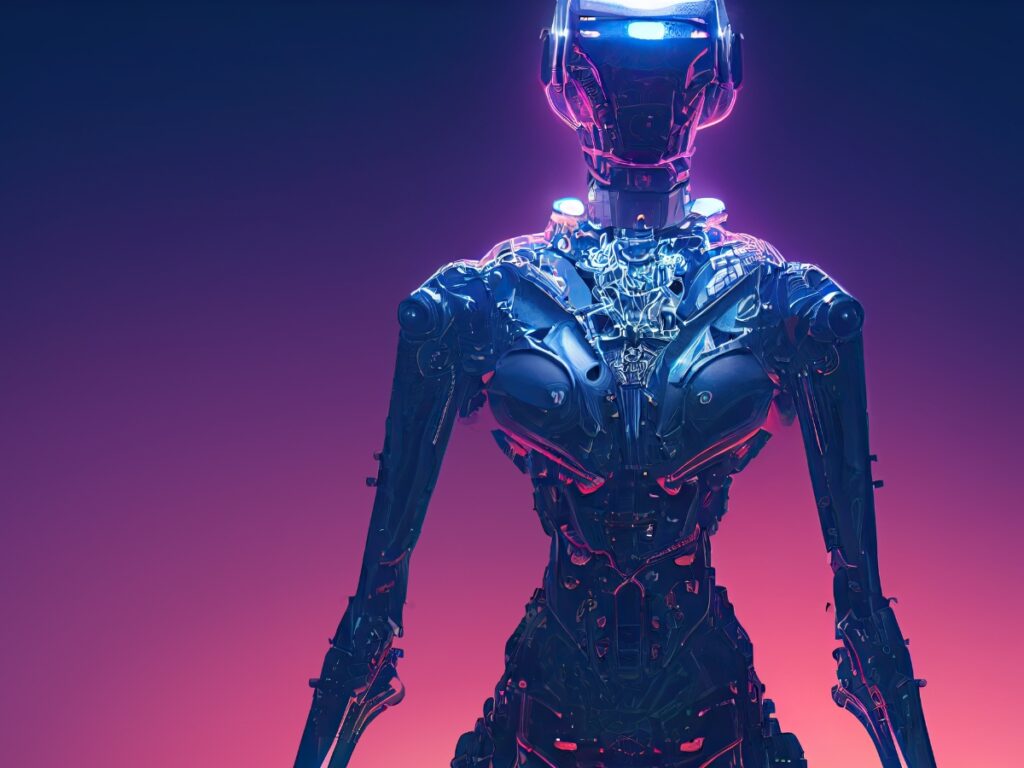This guide zooms in on the transformative impact of chatbots in retail, underscoring how this technological marvel revolutionizes the shopping experience in today’s digital age. We’ll unpack the myriad ways chatbots enhance the retail landscape, from personalizing consumer interactions to streamlining operations, and emphasize their increasing indispensability in modern commerce.
Quick Rundown – For the Swift Shopper:
- Chatbots in retail are increasingly becoming the bridge between brands and consumers, offering real-time assistance, personalized product recommendations, and round-the-clock customer service. They are pivotal in enhancing e-commerce platforms, helping consumers navigate vast product catalogs, and instantly addressing queries. With the ability to integrate with various sales channels, these bots drive seamless omnichannel experiences.
- The retail sector, marked by fierce competition and ever-evolving consumer preferences, demands innovation and agility. With their instant responsiveness and data-driven insights, Chatbots provide retailers with a strategic edge. By tapping into the potential of chatbots, retailers can foster deeper customer relationships, optimize sales strategies, and bolster their digital footprint, ensuring they stay ahead in the race.
Welcome to the thirteenth Blue Lane Group article in the Best Chatbots for Customer Service: Blueprint for Success in 2023 series. These posts examine the essential chatbot topics of customer service automation, exploring how chatbots revolutionize interactions, enhance user satisfaction, and redefine the benchmarks for excellence in modern customer-centric businesses.

Disclosure: The digital products mentioned in this article are highly regarded in the marketplace and are endorsed by the Blue Lane Group staff. We may earn a commission at no additional cost if you purchase through the provided links.
Table of Contents

Introduction: The Retail Revolution with Chatbots
In the ever-evolving digital age, retail industries are continuously seeking ways to innovate and cater to the changing demands of consumers. The integration of chatbots has emerged as a transformative solution in this dynamic environment.
These digital assistants, programmed to emulate human conversations, have become integral to modern retail strategy. With platforms like MobileMonkey and ManyChat facilitating omnichannel experiences, chatbots have transitioned from being mere experimental tools to being at the forefront of enhancing customer engagement.
As online shopping proliferates and brick-and-mortar stores strive for digital integrations, chatbots bridge the gap, ensuring streamlined processes and consistent customer interactions.
Why Modern Consumers Love Retail Chatbots
The desire for instant gratification, seamless interactions, and personalized shopping experiences drives the modern-day retail consumer. With their ability to provide immediate responses, Chatbots have become a favored tool for today’s discerning shoppers.
With AI-driven capabilities, platforms like Zendesk’s Answer Bot and Watson Assistant have significantly elevated the customer service domain. These chatbots can manage many interactions concurrently, ensuring every customer feels valued and heard. Moreover, as tools like Octane AI focus on tailoring the shopping journey, consumers get a more personalized and efficient shopping experience.

24/7 Availability and Real-time Responses
In the retail world, immediacy is paramount. One of the primary advantages chatbots offer retailers is their relentless 24/7 availability. While traditional brick-and-mortar stores have set operational hours and customer service teams may work in shifts, chatbots like Drift and Flow.ai are always ready.
Day or night, an instantaneous response is guaranteed if a customer wants product details, has a query, or seeks assistance. This consistent availability ensures that retailers, through platforms like Kik or Reply.ai, don’t miss potential sales opportunities, addressing customer needs as they arise.
Personalized Experiences and Swift Support
The amalgamation of AI, machine learning, and chatbot technology redefines the retail experience. Platforms like Chatfuel and ZoConvert harness these technologies to offer consumers tailored interactions. Today’s chatbots can recall customer preferences, past interactions, and even purchase histories, making each encounter uniquely tailored.
For instance, someone returning to a retail site might find chatbot-driven recommendations based on past behaviors. The advancements in natural language processing, especially in platforms like Pandorabots, enable chatbots to understand intricate queries, guaranteeing quick and precise support.

7 Key Chatbot Strategies in Modern Retail
Chatbots have emerged as a pivotal tool for enhancing customer engagement and driving sales in today’s dynamic retail landscape. These AI-powered digital assistants are revolutionizing the retail experience by offering personalized shopping recommendations, streamlining customer support, facilitating seamless order processes, and ensuring efficient marketing outreach.
They also play a role in simplifying checkouts, gathering real-time feedback, and enhancing the in-store shopping experience. As retailers seek innovative ways to cater to the evolving needs of the modern consumer, these seven key chatbot strategies underscore the transformative potential of technology in redefining retail interactions.
1. Personalized Shopping Experiences
In the evolving landscape of modern retail, consumers no longer view personalized shopping experiences as a bonus but rather as a standard expectation. Customers who navigate an ever-expanding online marketplace seek interactions tailored to their preferences. Recognizing this shift, cutting-edge chatbot technologies like Drift and Octane AI have emerged as pivotal players in the personalization arena.
Both platforms leverage advanced algorithms and rich user data to offer real-time product suggestions. With its automation capabilities, Drift ensures consumers find products in tune with their preferences, enhancing their overall shopping journey. On the other hand, Octane AI takes a more interactive approach.
Beyond product recommendations, it employs engaging quizzes and retargeting messages to create a more immersive and tailored experience. When integrated into the retail framework, these tools transform shopping into a bespoke experience where every interaction feels uniquely crafted for the individual consumer.
The combined power of Drift and Octane AI represents a new pinnacle in retail personalization, ensuring every customer feels acknowledged, valued, and catered to in their shopping journey.
2. Efficient Customer Support
Today’s consumers are characterized by their dwindling patience for lengthy wait times and tedious customer service processes. They seek immediacy, accuracy, and efficiency in every support interaction. As traditional customer service models struggle to keep pace, chatbot technologies, epitomized by platforms like Zendesk’s Answer Bot and IBM’s Watson Assistant, have emerged as game-changers in customer support.
With advanced machine learning, Zendesk’s Answer Bot delves into a vast knowledge base to deliver precise answers, ensuring users get timely and accurate solutions. This immediacy in response amplifies customer trust and enhances overall engagement.
Parallelly, Watson Assistant brings together the prowess of machine learning and natural language processing, simulating remarkably human interactions in their nuance and understanding.
The fusion of these platforms marks a transformative shift in the retail sector’s approach to customer service. Through their combined capabilities, they promise a new era where every support interaction is swift, accurate, and tailored to the individual needs of the modern consumer.

3. Streamlining Order Processes
In an age where speed is of the essence, the modern retail landscape requires practicality at every turn. Consumers today demand swift transactions and an overall streamlined ordering process, from product selection to checkout.
Recognizing this need, chatbots have become the essential cog in the retail machinery, optimizing the entirety of the shopping journey. Platforms like MobileMonkey and ManyChat are pioneers in this domain, revolutionizing how retailers approach e-commerce.
MobileMonkey, known for its versatile omnichannel retail experiences, ensures fluidity in the customer journey across multiple communication platforms. This continuity guarantees shoppers can easily navigate, select, and finalize their purchases.
Meanwhile, ManyChat taps into the vast realm of social commerce. Designed with Facebook Messenger at its core, it allows retailers to seamlessly integrate sales, marketing, and support, unifying the shopping experience within a single messenger interface.
These two platforms, in concert, redefine e-commerce, making the once tedious online shopping process a breeze. With MobileMonkey and ManyChat at the helm, retailers can promise their customers an efficient, hassle-free shopping experience primed for the digital age.
4. Marketing Campaigns and Alerts
For any retail venture, marketing remains the linchpin of success. The perfect synergy of timing and messaging can transform a fleeting interest into lasting customer loyalty. Chatbots are carving a niche as invaluable assets for real-time marketing campaigns and alerts in this dynamic arena.
Platforms like Chatfuel and ZoConvert are leading this wave of innovation, tailored explicitly for Messenger-based interactions. Chatfuel stands out with its robust capabilities for Facebook Messenger, providing retailers with an unparalleled avenue to tap into their expansive Facebook audience.
Brands can craft interactive campaigns through their platform, ensuring consumers remain engaged and informed about the latest products and offers. Conversely, ZoConvert amplifies this by focusing on functionalities tailored for retail, from driving sales to creating personalized exchanges.
Chatfuel and ZoConvert offer a potent concoction for retailers, ensuring that marketing messages don’t just reach the audience but resonate deeply, driving brand engagement and conversions.

5. Simplified Checkouts and Payments
In retail, the final touchpoint—checkout—can significantly influence a customer’s overall shopping experience. A seamless, hassle-free transaction leaves a lasting impression and cements the likelihood of return visits.
Recognizing this pivotal phase, the retail landscape rapidly integrates chatbots to perfect the checkout experience. Platforms like Quiq and SnatchBot offer solutions that make checkouts and payments simple and enjoyable.
Quiq has revolutionized the shopping process, enabling retailers to engage customers on their favorite messaging platforms, SMS or Apple Business Chat. This omnichannel approach ensures customers enjoy a seamless checkout without ever having to leave their preferred communication medium.
Meanwhile, SnatchBot elevates this experience with its arsenal of retail-centric templates. Retailers can swiftly deploy a chatbot intricately designed for their specific checkout requirements.
Quiq and SnatchBot have reimagined the retail checkout landscape, turning a once-cumbersome process into a swift and delightful journey, invariably boosting conversions and amplifying customer delight.
6. Real-time Feedback and Insights
In the ever-evolving world of retail, staying in tune with customers’ voices is paramount. Acquiring real-time insights into their shopping behaviors, preferences, and feedback drives a retailer’s growth and innovation strategies.
Chatbots have emerged as indispensable allies in this mission, with platforms like TARS and Reply.ai setting the benchmark. TARS goes beyond the conventional, offering a multifaceted platform that seamlessly captures insights. Whether through appointment bookings or interactive surveys, TARS provides retailers with invaluable data, painting a holistic picture of the customer experience.
Meanwhile, Reply.ai raises the bar further. With its robust automation capabilities tailored for retail, it ensures that feedback is not only collected but is genuine and actionable. Its commitment to maintaining high-quality engagements while automating the feedback process makes it a must-have tool for retailers.
When leveraged effectively, TARS and Reply.ai empower retailers to listen to their customers and understand and act upon their needs and suggestions. This proactive approach fortifies customer trust and loyalty, ensuring a brand’s growth and success in the competitive retail landscape.

7. Enhancing In-store Assistance
In an era dominated by online shopping, one might think that the relevance of physical stores has diminished. On the contrary, the tactile pleasure and immediacy of in-store shopping still attract a massive crowd. However, with the changing retail landscape and rising customer expectations, merely having an in-store presence isn’t enough.
Physical retail outlets today must seamlessly integrate digital innovations to offer an enhanced and consistent shopping experience. Here, chatbots, particularly platforms like Flow.ai and Kik, have emerged as game-changers. They assist customers online and play a pivotal role in augmenting the in-store experience.
Flow.ai excels with its state-of-the-art visual tools, allowing retailers to craft bespoke omnichannel chatbot interactions. By doing so, retailers can ensure consistent brand messaging, whether the customer is online or physically present in the store.
On the flip side, with its renowned chat platform and integrated bot store, Kik has carved a niche among the younger, tech-savvy audience. For retailers keen on tapping into this demographic, Kik provides an avenue to craft in-store assistance and experiences that resonate with their unique preferences.
In essence, Flow.ai and Kik exemplify the evolution of the retail sector, harmoniously fusing the digital with the physical. Their innovative solutions guarantee that in-store visitors receive the same level of personalized attention and convenience they’ve come to expect from online shopping, setting new benchmarks for retail excellence.

Technical Insights: Integrating Bots in Retail
The retail landscape is undergoing a seismic shift powered by technology. Today’s consumers demand more than just products; they seek experiences, convenience, and personalization. With their real-time interactions and data-driven recommendations, Chatbots are poised to become a cornerstone of this new retail paradigm.
However, merely deploying a chatbot isn’t enough. These chatbots must be seamlessly integrated into the broader retail tech ecosystem for a transformative impact.
Every piece of the retail puzzle must communicate efficiently, from inventory management systems and e-commerce platforms to CRM tools and payment gateways. When a customer asks a chatbot about product availability, the bot should instantly pull real-time data from the inventory system.
If a shopper seeks personalized recommendations, the chatbot should be able to tap into past purchase data and browsing history from the CRM.
Merging Bots with CRM: A Look at Pandorabots
Pandorabots stand out regarding technical robustness and flexibility in the chatbot realm. This platform offers solutions easily integrated with existing Customer Relationship Management (CRM) systems. Retailers can harness the power of Pandorabots to ensure their chatbots are not standalone entities but integrated parts of a larger, cohesive customer engagement strategy.
With proper integration, chatbots can pull real-time data from CRM systems, offering personalized assistance based on a customer’s purchase history, preferences, and past interactions. This convergence of chatbots and CRMs ensures the digital retail experience is as personalized and insightful as interacting with a knowledgeable store associate.
Enhancing Sales with AI-Powered Tools: A Nod to IBM’s Watson
In the contemporary retail environment, where every click, like, and share translates to consumer preferences, harnessing this data is paramount. The power of AI in deciphering these vast datasets is undeniable.
One standout in this domain is IBM’s Watson. With its advanced cognitive capabilities, Watson transcends traditional chatbot functionalities. It doesn’t just respond to queries but anticipates them, offering personalized product recommendations and crafting tailored marketing messages that resonate.
By analyzing user behaviors, purchase histories, and even sentiment analyses from reviews, Watson creates a customized shopping journey, leading to higher conversion rates and increased customer loyalty. This blend of AI and predictive analytics positions Watson as a pivotal tool for retailers aiming to bolster sales in the digital age.

Metrics to Gauge Retail Chatbot Success
To understand the effectiveness of chatbots in retail, one needs tangible metrics. While sales conversions are the ultimate goal, other KPIs offer deep insights. Response time, for example, measures a chatbot’s efficiency. The number of queries resolved without human intervention speaks to its effectiveness.
Customer satisfaction scores post-chatbot interactions directly reflect the bot’s utility. Also, the frequency of repeated user interactions can indicate the level of user trust in the chatbot. By monitoring these metrics, retailers can continually refine their chatbot strategies, ensuring they align with overarching business objectives and customer satisfaction goals.
The Future Outlook of Chatbots in Retail
The symbiotic relationship between chatbots and retail is evident. As e-commerce grows, so does the need for efficient, round-the-clock, and personalized customer service. Chatbots, powered by ever-evolving AI algorithms, are increasingly filling this space.
Shortly, we can anticipate chatbots that answer queries and predict needs, offer virtual try-ons, or even provide real-time in-store navigation. Integrations with augmented reality might redefine online shopping, while voice-command chatbots could revolutionize how we shop in physical stores.
As technology advances, the only constant will be change. For retailers, staying abreast of these shifts and leveraging chatbots innovatively will be critical to future success.

FAQs: Unraveling Common Queries on Retail Chatbots
- What is the primary function of chatbots in retail?
- Chatbots in retail primarily focus on enhancing customer engagement, offering personalized shopping experiences, streamlining the order and checkout processes, and providing swift customer support.
- How secure are chatbots for processing transactions?
- Modern retail chatbots have advanced encryption and security protocols, protecting customer data and payment information. However, always choose reputable chatbot platforms and adhere to best security practices.
- Can chatbots integrate with existing retail CRM systems?
- Absolutely. Many advanced chatbots, especially Pandorabots, offer seamless integration capabilities with existing CRM systems, ensuring a unified customer view and enhanced data analytics.
- Do chatbots require constant updates?
- Chatbots operate on algorithms that benefit from regular updates for optimal performance. This includes incorporating user feedback, adapting to changing customer behavior, and updating product catalogs.

Conclusion: The Promising Road Ahead for Retail Chatbots
The integration of chatbots in the retail domain signifies a transformative era in customer engagement and service dynamics. These digital assistants, equipped with evolving AI capabilities, are reshaping the retail landscape by providing unparalleled convenience, personalization, and efficiency.
As consumers increasingly seek immediate responses and tailored experiences, chatbots will only grow significantly, bridging the gap between digital prowess and human touch.
The advancements in AI, machine learning, and natural language processing ensure that future chatbots will be more intuitive, predictive, and even proactive in their interactions. Retailers who embrace and evolve with this technology will undoubtedly position themselves at the forefront of customer-centric innovation. C
chatbots represent a trend and a fundamental shift in how businesses and consumers interact in this ever-evolving retail ecosystem. The road ahead for retail chatbots is not just promising; it’s revolutionary.

You Might Also Like
If you enjoyed this article and received value from it, check out the other Blue Lane Group articles in the Best Chatbots for Customer Service: Blueprint for Success in 2023 series:
- Chatbot ROI: Unlock Unmatched Profits with Top 5 Strategies for Optimization
- Omnichannel Chatbots: Unlock Consistent Engagement with 7 Best Practices
- Chatbot KPIs: 10 Essential Metrics to Drive Optimal Results
- Multilingual Chatbots: Break Language Barriers with 8 Leading Solutions
- Enterprise AI Chatbot Solutions: 7 Key Tools to Supercharge Your Business
- Mastering Chatbot Training: 7 Strategies for Optimal User Engagement
- Chatbot APIs: 6 Leading Options for Seamless Functionality
- Chatbot Scripts: 9 Proven Strategies to Boost Conversions and Engagement
- Rule-Based Chatbots: Drive Consistent Responses with Top 9 Benefits
- Chatbot Success Metrics: Unlock Optimal Performance with Top 10 Insights
- Chatbot Analytics: Drive Excellence with 10 Essential Tools
- Mastering Interactivity: Top 10 Chatbot Frameworks Explored
- Chatbots in Retail: 7 Winning Strategies for Elevated Customer Engagement
- Chatbots for Lead Generation: 6 Best Practices to Transform Your Funnel
- Chatbot Integrations: 6 Essentials for Enhanced Productivity and Operations
- Chatbot UX: Enhance Engagement with These 8 Vital Principles
- Chatbot Security: 7 Essentials to Safeguard Your Business
- Chatbot Development Services: 7 Must-Knows to Boost Your ROI
- Chatbots in Healthcare: 6 Leading Innovations Revolutionizing Patient Care
- NLP for Chatbots: Top 6 Techniques Transforming Chat Experiences
- Benefits of Chatbots in Customer Service: 7 Key Sales Boosters
- 7 Essential Social Media Chatbots for Unmatched Engagement
- Building Chatbots Powered by AI: 5 Proven Techniques for Epic Profits





